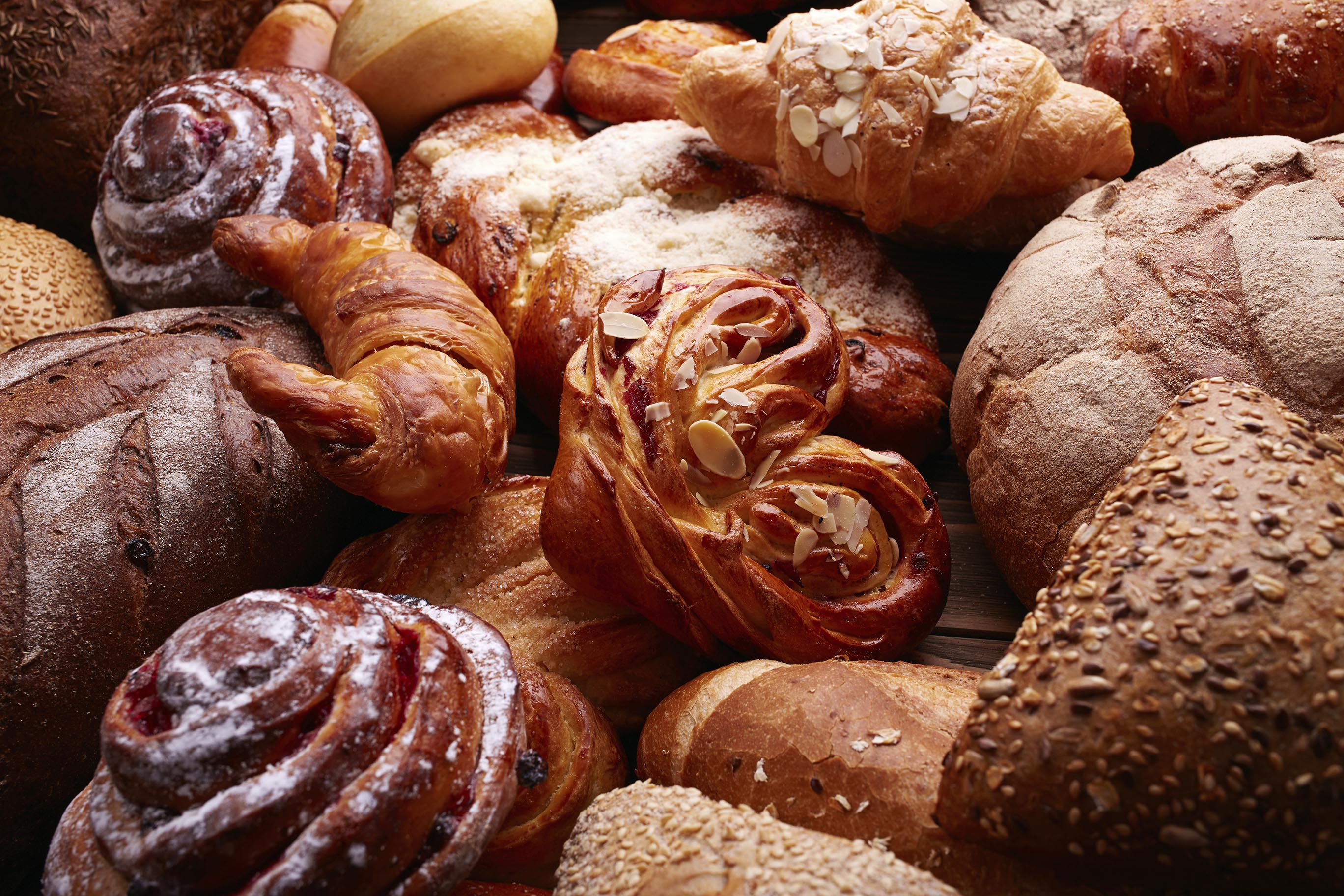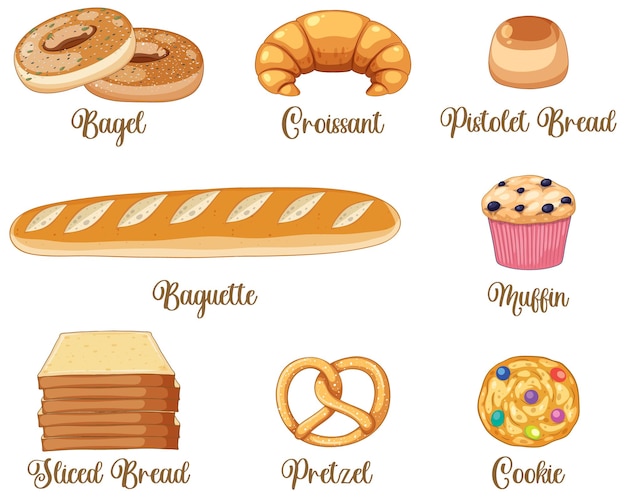Cafe Shop-- The Perfect Cafe for Coffee Lovers and Foodies
Cafe Shop-- The Perfect Cafe for Coffee Lovers and Foodies
Blog Article
From Sourdough to Croissants: Types of Breads and Pastries You Should Attempt
Discovering the diverse world of bread and pastries discloses an elaborate tapestry of tastes and textures, each with its very own unique story. From the zesty intricacy of sourdough, soaked in tradition and natural fermentation, to the refined flakiness of croissants, personifying French culinary mastery, there is much to find. Consider the famous baguette, with its crisp exterior and airy crumb, or the buttery splendor of brioche. Even the elaborate layers of Danish breads, typically loaded with lush custards or fruits, use a fascinating contrast. What makes each of these developments genuinely unique? The response exists simply in advance.
Sourdough Bread
Sourdough bread, renowned for its distinct zesty taste and crunchy texture, is an ageless standard that has actually been cherished for centuries. Stemming as a staple in old civilizations, this artisanal bread owes its one-of-a-kind characteristics to the natural fermentation process entailing wild yeast and lactic acid bacteria. The lack of industrial yeast permits for a slower fermentation, which enhances the depth of flavor and leads to an extra digestible loaf.
The traditional method of making sourdough begins with a starter, a blend of flour and water that catches wild yeast from the atmosphere. This starter is thoroughly maintained and fed consistently to keep the yeast and germs active. When presented to dough, the starter starts fermentation, producing bubbles of carbon dioxide that offer the bread its ventilated structure. The prolonged fermentation duration not only improves the structure but likewise damages down gluten and phytic acid, making sourdough extra nutritious and much easier on the digestion system.
Artisans worldwide take satisfaction in their distinct sourdough dishes, each reflecting regional active ingredients and conditions - Lofology Bakery And Cafe. Whether delighted in plain, toasted, or as a structure for exquisite sandwiches, sourdough bread stays an enduring sign of culinary workmanship and custom

Baguettes
Though typically related to the culinary practices of France, baguettes have actually come to be a cherished staple in pastry shops around the globe. Well-known by their elongated form and crisp, golden-brown crust, baguettes are typically thought about the epitome of basic, yet elegant, bread-making (Cafe Shop). The beginnings of the baguette in its contemporary kind can be mapped back to the early 20th century, when developments in baking technology enabled for the development of this distinct loaf
At its core, a conventional baguette makes up simply 4 active ingredients: flour, water, yeast, and salt. Nonetheless, the mastery exists in the method. The dough goes through a careful process of massaging, proofing, and cooking, which causes its characteristic appearance-- a thin, crackly crust enveloping a soft, airy inside. This juxtaposition of structures is a defining function that adds to the baguette's prevalent acclaim.
Baguettes are flexible and can be enjoyed in numerous means. Whether sliced and served with butter, combined with cheeses and charcuterie, or utilized as the structure for a sandwich, the baguette uses a delightful eating experience. This simple loaf showcases the charm of simplicity, making it an enduring favorite among bread fanatics worldwide.
Croissants
Distinguished for their buttery, flaky layers, croissants stand as a quintessential symbol of French pastry workmanship. Originating from Austria but developed in France, croissants are a staple in patisseries and bakeshops worldwide (Lofology Bakery And Cafe). Their production entails a thorough procedure called lamination, in which dough is folded up with butter numerous times to create slim layers that expand perfectly when baked
The key to a best croissant exists in the high quality of ingredients and the precision of strategy. The dough has to be dealt with naturally to maintain the integrity of the layers, guaranteeing a ventilated, light interior.
Croissants can be taken pleasure in simple or full of a range of active ingredients such as almond paste, chocolate, or ham and cheese, supplying convenience to match different tastes. Whether enjoyed as an early morning indulgence or an afternoon reward, croissants exemplify the artistry of French baking, making them a must-try for any kind of culinary lover.
Brioche
Brioche's rich history and luxurious structure make it a standout worldwide of bread and breads. Originating from France, this sweet, buttery bread days back to at the very least the 15th century and has because come to be a sign of extravagance and cooking skill. Its name, acquired from the Old French term "brier," implying to knead, highlights the relevance of strategy in its preparation.
The key to brioche's distinct personality hinges on its enriched dough, which Learn More Here is packed with eggs and butter, causing a tender crumb and a gold, flaky crust. This high-fat web content not just improves its taste but also adds to its soft, pillowy texture. Brioche's versatility is another reason for its widespread acclaim. It can be delighted in plain, toasted with a touch of jam, or utilized as the base for more intricate creations such as brioche à tête, burger buns, or even bread pudding (Cafe Shop).
Despite its relatively simple components, the art of crafting a perfect brioche requires accuracy and perseverance. The dough undertakes a precise process of working, relaxing, and proofing, making certain that each loaf accomplishes its particular agility and richness. This dedication to top quality and tradition concretes brioche's status as an ageless standard in the pastry shop arsenal.

Danish Pastries

Danish pastries are celebrated for their flexibility. The enhancement of toppings like nuts, topping, or fresh fruit commonly improves their aesthetic allure and flavor profile.
The process of making Danish breads demands precision. The dough must be kept at an ideal temperature level to ensure the butter layers stay distinctive, and the folding technique calls for a cautious hand to accomplish the best equilibrium of flakiness and tenderness.
In the context of international bread offerings, Danish breads stand out not just for their thorough workmanship however additionally for their ability to supply a wonderful ruptured of tastes and structures in every bite (Lofology Bakery And Cafe). A real testament to the art of baking, they continue to be a precious option amongst pastry enthusiasts
Conclusion
The exploration of diverse bread and bread types, from the zesty deepness of sourdough to the buttery flakiness of croissants, exposes an abundant tapestry of culinary traditions. The crisp crust and airy interior of baguettes, the luxurious richness of brioche, and the elaborate layers of Danish breads loaded with custard or fruit highlight the artistry associated with cooking. Each variety uses a distinct sensory experience, underscoring the value of these baked items in global culinary culture.
Report this page